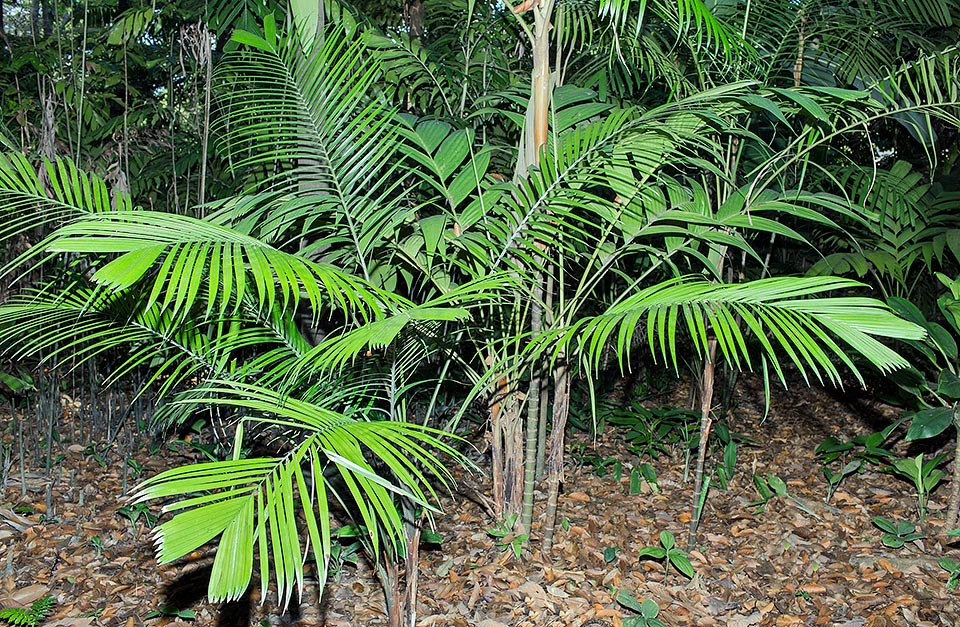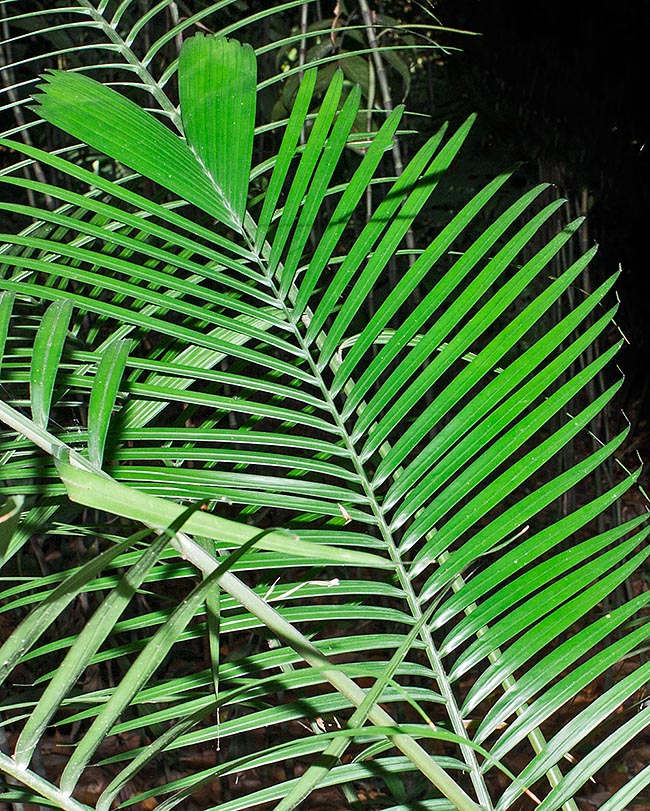Family : Arecaceae

Text © Pietro Puccio

English translation by Mario Beltramini

Rare in cultivation, Pinanga pachyphylla is native to Borneo. About 2 cm broad stems, even 3 m tall and on which we see the trace of the fallen leaves junction © Mazza
The species is native to Borneo (Sarawak) where it grows in the underwood of the humid forests characterized by sandy, acidic and poor soils, locally known with the name of “kerangas”, at low and medium altitudes.
The generic term is the Latinization of the Malay name ‘pinang’; the specific name is the combination of the Greek adjective “παχύς” (pachys) = big, thick, and of the substantive “φύλλον” (phyllon) = leaf, with reference to the unusual thickness of the leaves.
The Pinanga pachyphylla J.Dransf. (1991) is an unarmed monoecious species, solitary or cespitous, with stems, of about 2 cm of diameter, up to 3 m tall and on which are evident the rings trace of the junction of the fallen leaves.

The leaves are pinnate, bout 1,2 m long, with several bright green pinnules © Giuseppe Mazza
The leaves are pinnate, about 1,2 m long, with numerous bright green pinnules, long in the median part up to 50 cm and about 2,5 cm broad, particularly thick, narrow, linear with pointed apex, excepting the terminal two, up to about 6 cm broad, fishtail-like, with truncated and toothed extremity.
The foliar base wraps completely the stem for a length of about 25 cm forming a sort of tubular capital. The inflorescences come under the leaves (infrafoliar) with ramificatins of the first order, drooping, up to 20 cm long, with rachillae, 10-12 cm long, initially of green colour, then orange in fruit, baring unisexual fleshy flowers arranged in the characteristic triad (a female one between two male). The fruits are ovoid with pointed extremities, about 1 cm long, orange yellow when ripe, arranged in two opposite rows.
Species rare in cultivation with the pinnules of unusual thickness, cultivable in the tropical and humid subtropical climate zones, in semi-shaded position on soils, even very poor, acidic, draining, maintained constantly humid.
Due to its ornamental characteristics and the contained dimensions, it could be an excellent subject to cultivate in pot for the decoration of open spaces, where the climate allows so, or winter gardens, verandahs and luminous interiors with lowest winter temperatures that is good if they do not drop under the +15 °C. Regular waterings from spring to autumn, in way to maintain constantly humid the substratum, more reduced in winter, allowing the upper layer to dry up before watering again.
→ For general notions about ARECACEAE please click here.
